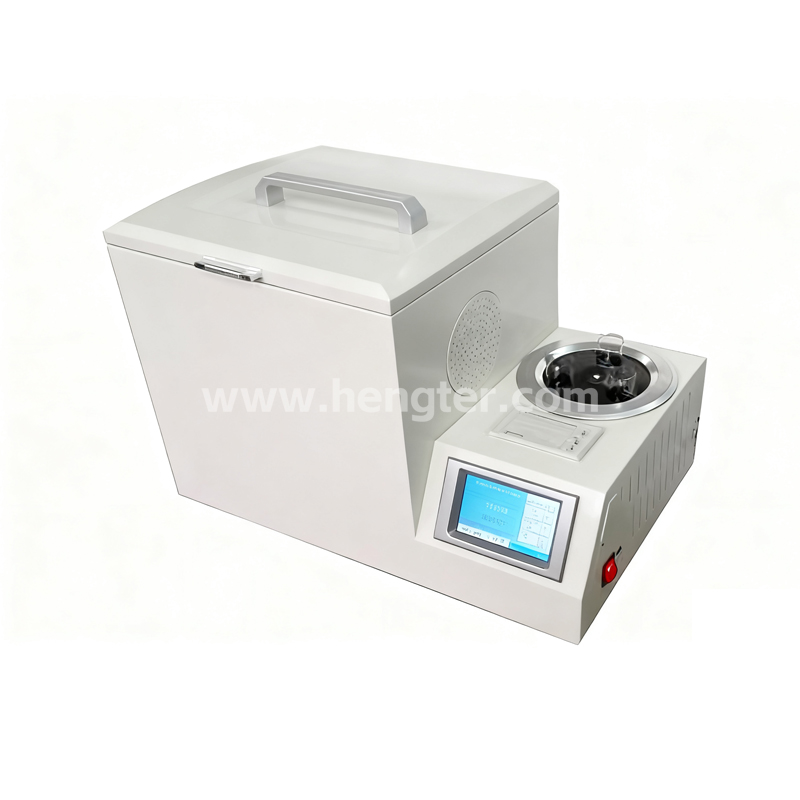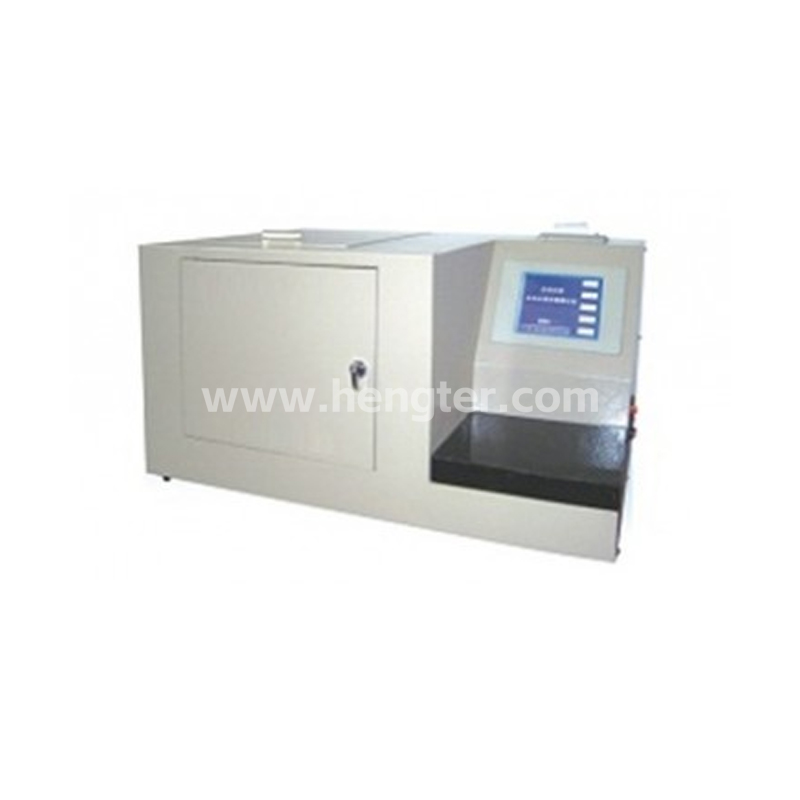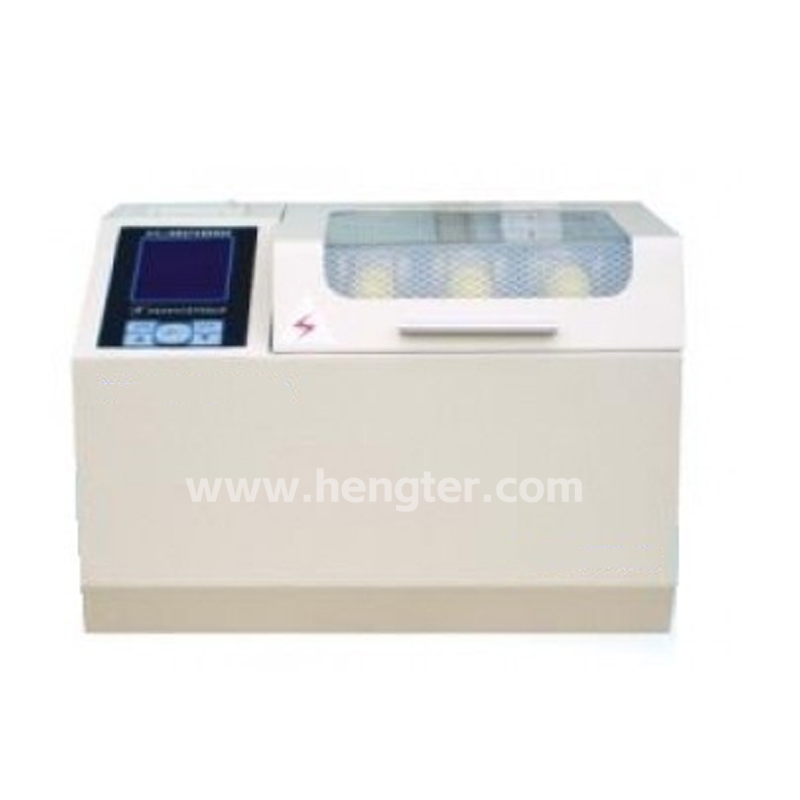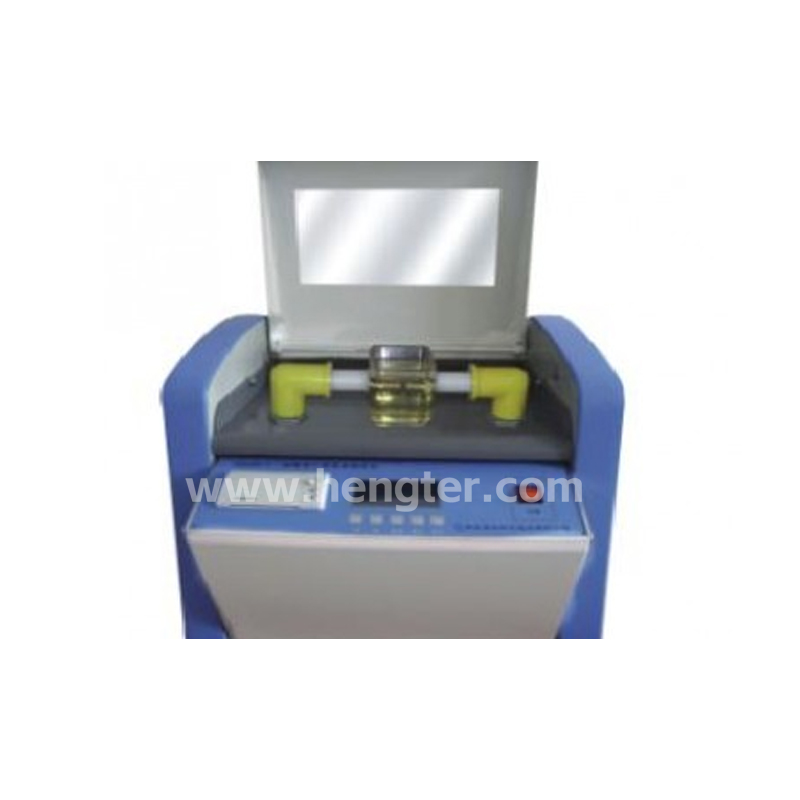The platinum ring method is a traditional testing approach that has been around for approximately 70 years. It is a ring with a circumference of 60mm made of platinum wire with a diameter of 0.37mm. When testing, first immerse the platinum ring 2-3mm below the liquid surface (or the interface of two immismixed substances), and then slowly lift the platinum ring upwards. A film will form between the ring and the liquid surface. The membrane exerts a downward pulling force on the platinum ring. Measure the maximum force value exerted by the membrane on the ring throughout the entire lifting process of the platinum ring, and then convert it into the true surface (interfacial) tension value.
The HTCZ-808 fully automatic surface and interfacial tension meter, based on the “platinum ring method principle”, accurately measures the surface and interfacial tension values of liquids and is widely used in industries such as chemical engineering, petroleum, power, scientific research, and railways.
Main functions:
1. It adopts STM microprocessor chip for automatic control and fully automatic measurement of the surface or interfacial tension value of the sample.
2. Color Chinese and English touch screen display, prompt menu operation, automatic saving and automatic printing of measurement results;
3. It is equipped with two methods for measurement: the platinum ring method and the plate method. The temperature control of the constant temperature bath can be freely set from -10°C to 100°C
4. It features an automatic temperature compensation function at 25℃, which resolves the influence of temperature on the measured tension value.
5. The instrument automatically zeros, measures, calculates and displays the experimental results, and has a power-off storage function.
6. The instrument’s lifting platform rises and falls automatically, smoothly, with low noise and high precision.
7. The test result storage capacity is 500 items, and historical records can be accessed at any time.
8. The use of magnetic can closed sensors and the adoption of equal-interval multi-point calibration have enhanced the repeatability and reproducibility of the measurement results.
9. It can work independently or be connected to a laptop or microcomputer via USB or RS232 interfaces to achieve networked management.
Instrumentation Standards :
GB6541-1986 “Determination of Interfacial Tension of Petroleum Products between Oil and Water” (Ring Method)
ISO6295-1983 Determination of Interfacial Tension between Petroleum Products and Mineral Lubricating Oils and Water – Ring Method
JB/T9388-1997 Technical Conditions for Interfacial Tensiometer
ISO1409-1995 Determination of surface tension of plastics, rubber, polymer dispersions and latex
SH/T1156-92 “Determination of Surface Tension of Synthetic Latex”
GB/T5549ISO 304-1985 “Determination of Surface Tension of Surfactants by the Liquid Film Pulling Method”
ISO4311-1979 The requirements of standards such as “Method for Determining Surface Tension of Anionic and Nonionic Surfactant Rings”.
GB/T22237-2008 Determination of the surface tension of surfactants
JB/T18396-2001 Determination of surface tension by natural latex ring method
As well as standards such as ISO14090-82, ASTM D1417, EN14370, ZB2025-93, and GB2960-82.
Main technical indicators:
Display mode: 10-inch color touch screen display in both Chinese and English
Measurement method: Platinum ring method principle
Platinum ring radius: R9.55, platinum wire r0.3
Measurement range: 0-400mN/m.
Agility: 0.1mN/m or 0.01mN/m
Accuracy: ±0.01mN/m
Self-checking function: Automatic diagnosis of instrument faults
Temperature compensation: The instrument automatically compensates for temperature
Power consumption: Less than 40W
Overall dimensions: 440×190×350mm
Operating environment: Recommended temperature: 10℃-40℃, humidity: less than 80%
Power source: AC220V±10% 50HZ±2.5HZ
Weight: Approximately 6 kilograms

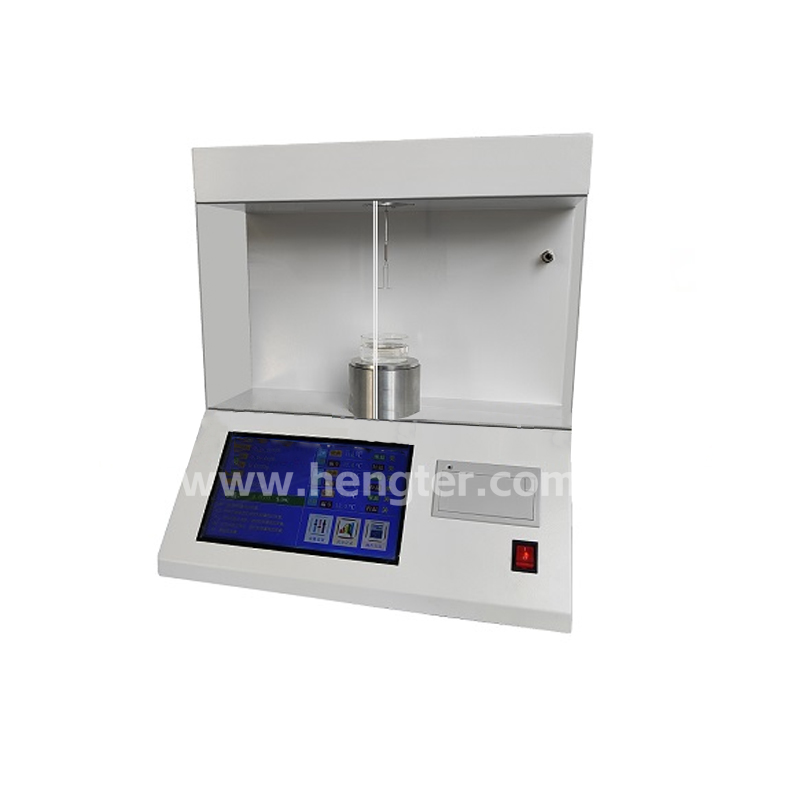

 Contact form
Contact form